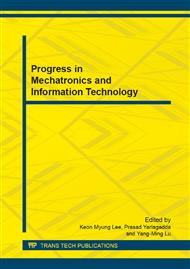p.771
p.775
p.782
p.788
p.794
p.798
p.803
p.809
p.815
A Control Architecture for Mission Re-Planning and Plan Repair of AUV
Abstract:
This paper present a hybrid, hierarchical control architecture for mission re-planning and plan repair of autonomous underwater vehicle (AUV) navigating in dynamic and uncertain marine environment. The proposal carries out a component-oriented part-based control architecture structured in three parts: situation reasoning, re-planning trigger and hierarchical re-planning layer. Situation reasoning using the unstructured real-word information obtained by sorts of sensor detectes and recognizes uncertain event. According the event types and influence degree, the re-planning trigger decides the re-planning level. Hierarchical re-planning layer contains mission re-planning, task re-planning and behavior re-planning. Different re-planning level depends on the result of re-planning trigger. Preliminary versions of the architecture have been integrated and tested in a marine simulation environment.
Info:
Periodical:
Pages:
794-797
Citation:
Online since:
November 2013
Authors:
Price:
Сopyright:
© 2014 Trans Tech Publications Ltd. All Rights Reserved
Share:
Citation:


